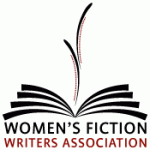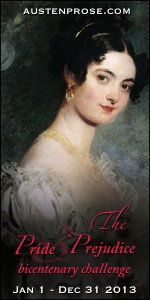
Nicholas Sparks, The Lucky One (Grand Central, reprint, 1 Mar 2012)
I have taken a while to post my review of The Lucky One because I wanted to think about my reaction to the book. And when I got ready to write about it I thought, “Jeez, who am I to criticize Nicholas Sparks, an author who single-handedly boosted the opening of the movie based on his book with a social media campaign, and who has legions of fans who buy everything he writes.” Then I remembered that books are like wine and art: it’s all about what you like, not what’s popular, necessarily. So here goes…
Full disclosure right off the bat: I was NOT previously a fan of Nicholas Sparks. An author who writes love stories but eschews happily ever after endings will not generally get my vote. And that, I acknowledge, is entirely a personal preference. I offer full disclosure because although I watched the movie (first) and then read the book (because I did like the movie), I admit I was looking for flaws the whole time I was reading. And I think when you are looking for flaws in a book you generally find them. In the end, I found much to like about this book and almost an equal amount to dislike, overall leaving me slightly dissatisfied. Below I attempt to lay out what it was about the book that left me with that feeling.
THE THINGS I LIKED:
Good use of literary device to tell backstory.
Yummy hero—maybe too yummy (and also maybe colored by my mental image of Zac Ephron with his shirt off).
Finely drawn setting in North Carolina (a true strength of Mr. Sparks).
The dog.
THINGS I DIDN’T LIKE:
The heroine in the book (but not in the movie) was weak, wishy-washy, and downright high-schoolish at times.
Stilted dialog between hero and heroine.
Unsatisfying love scenes.
I will explain all, but must warn of SPOILERS. If you want to read the book or see the movie without my humble opinions coloring your experience, or knowing the ending, or if racy scenes bother you, DO NOT READ ON.
 The Lucky One is about Logan Thibault, a Marine who finds a photograph of a young woman while out on a run during a deployment to Iraq. When no one claims the picture after a several days, he ends up keeping it. In the course of his duties over three combat tours, he survives attacks and explosions where others die, and he starts to get a reputation for lucky escapes—all tied to when he started carrying the picture around. He doesn’t really believe the hype about the picture, though, until he is out on a fishing trip after he has left the Marine Corps and his best friend ends up dying in a freak boating accident that Logan, once again, survives. This last straw pushes him to find the woman in the picture.
The Lucky One is about Logan Thibault, a Marine who finds a photograph of a young woman while out on a run during a deployment to Iraq. When no one claims the picture after a several days, he ends up keeping it. In the course of his duties over three combat tours, he survives attacks and explosions where others die, and he starts to get a reputation for lucky escapes—all tied to when he started carrying the picture around. He doesn’t really believe the hype about the picture, though, until he is out on a fishing trip after he has left the Marine Corps and his best friend ends up dying in a freak boating accident that Logan, once again, survives. This last straw pushes him to find the woman in the picture.
Logan walks from Colorado to North Carolina with his dog, Zeus, in search of the woman in the photo. Sparks uses that device of to deliver the bulk of the backstory on his main character, which works well because the reader can “remember” along with Logan while he’s doing all that walking. The story before the story, in this case, is crucial to the reader’s understanding of Logan’s motivation for just showing up on the heroine’s doorstep one day, and why he doesn’t tell her about the picture. Logan himself is an appealing hero: cool under fire, thoughtful, good-looking, strong, good with dogs and children, plays piano well, and is worthy of love according to Beth Green, the heroine. His only flaw, really—and it’s a big one—is that he fails to tell Beth right away why he came looking for her.
Sparks is at his best when describing setting and background. His explanation of the duties and thought processes of an active duty Marine, and his description of the small North Carolina town where Logan finds Beth are both real and immediate. He puts you there, in that place, and takes his time setting the scene so the events can play out on that stage.
Zeus, the dog. Great name for a German shepherd. Logan obtains the dog before his trip to North Carolina precisely because  there is a German shepherd standing with Beth in the “lucky” picture. Ben, Beth’s son, falls in love with Zeus, and it is Zeus who saves Ben from the river in the final crisis, thus tying the photograph—and Logan’s presence in Beth’s life—directly to the life of her son Ben. I found that connection very cool; the movie was not able to do that aspect justice.
there is a German shepherd standing with Beth in the “lucky” picture. Ben, Beth’s son, falls in love with Zeus, and it is Zeus who saves Ben from the river in the final crisis, thus tying the photograph—and Logan’s presence in Beth’s life—directly to the life of her son Ben. I found that connection very cool; the movie was not able to do that aspect justice.
Beth has almost as much of the story as Logan, but I found Beth’s character harder to relate to. Her backstory: after getting pregnant in high school, she marries Keith Clayton, the baby’s father, but quickly calls it quits on the marriage after Ben arrives. Since her parents died in a car accident when she was a child, she now lives with her grandmother, who owns a kennel. Beth also teaches second grade at the elementary school. Beth’s ex, Keith, is the villain in the story and the scion of the most influential family in the area. He is slightly creepy, more than a little sociopathic, and very used to getting what he wants. Beth regularly has qualms about Keith concerning their custody arrangement and his treatment of their son and herself, but does nothing about the situation except worry and complain to her grandmother. The most unforgivable action for me as a reader on Beth’s part was, during the final crisis, when she stands on the river bank and more or less wrings her hands while her ex-husband (Keith) and her lover (Logan) and her lover’s dog (Zeus) all try to save Ben who is in imminent danger of drowning.
WORST scene/line (IMO):
Unfortunately for the love story in this book, the dialog between Logan and Beth is often wooden and juvenile—unconnected to the essence of these characters as we have come to know them—as in this sample from their first real date:
“I might have asked you out, but I’m going to make you drive.”
“And here I thought I was going out with a liberated woman,” he protested.
“I am a liberated woman. But you’ll drive. And pick up the check.”
He laughed…
Zeus seemed confused about what was happening and [Beth] heard him whining again.
“He sounds sad.”
“He probably is. We’re seldom apart.”
“Mean man,” she scolded him.
He smiled at her playful tone as he slipped the car into reverse.
BEST scene/line (IMO):
As I state above, Sparks is at his best in his description of the setting, rolling it in with action and Logan’s internal thoughts:
…he headed east on Route 54, walking on the grassy shoulder, staying well off the road. He’d learned in his travels never to trust drivers. Zeus trailed behind, panting heavily. He stopped and gave Zeus some water, the last in the bottle.
Businesses lined either side of the highway. A mattress shop, a place that did auto body repairs, a nursery, a Quick-N-Go that sold gas and stale food in plastic wrappers, and two ramshackle farmhouses that seemed out of place, as if the modern world had sprouted up around them.
Writing tip #5 (see previous posts here and here for tips 1-4): Do not distance the reader when writing about SEX AND INTIMACY. This was the deal breaker for me in this book. Since Sparks doesn’t go with the closed door entirely, why not play out the sex in scene instead of summary? After offering up personal details about themselves at the end of a magical date, Logan and Beth make love but the action is confined to this paragraph:
They took their time making love. Thibault moved above her, wanting it to last forever, while whispering his love for her. He felt her body quiver with pleasure again and again. Afterward, she remained curled beneath his arm, her body coiled in contentment. They talked and laughed and nuzzled, and after making love a second time, he lay beside her, staring into her eyes before running a gentle finger along her cheek. He felt the words rise up inside him, words he had never imagined himself saying to anyone.
“I love you, Elizabeth,” he whispered, knowing they were true in every way.
Maybe this is, again, personal preference on my part, but why not SHOW how much Logan loves Beth with his ACTIONS as they make love? TELLING us this way for me makes the scene conclude with sentimentality instead of deep emotion. Compare the above scene with a comparable paragraph from Lisa Kleypas’s Dream Lake (The lovemaking SCENE lasts for nine pages BTW; these paragraphs are toward the end.):
He settled deeper, every movement careful and easy. She moaned as she felt her body yielding to the steady pressure.
“Am I hurting you?” she heard him whisper.
She shook her head blindly. The sensation was overpowering, but he was so gentle, filling her slowly, letting her take him by degrees. And all the while he brushed kisses against her mouth and throat, whispering that she was sweet, soft, beautiful, that nothing had ever felt this good, nothing ever would again…
He began to rock against her, a lascivious friction that prodded and rubbed and caressed. The pleasure was shattering. She stiffened, her legs spreading as she was thrown into a blinding climax. His thrusts lengthened, centering straight and deep, and then Alex shuddered, and held her as if the world were about to end.
Whew! Blush worthy, I know, but Kleypas SHOWS the reader how much Alex cares for Zoe through his every action from his gentleness to his patience to his climax. And he never says the words, “I love you.” But we know. Which one is more powerful? Which one does the main job of the novelist—to elicit emotion in the reader—better?
What do you think? Is Nicholas Sparks one of your favorite authors? Do you like sex in books to be off the page or on?
www.marines.mil photo credits to Lance Corporal Ali Azimi and Corporal Marco Mancha
 James McAvoy (what happened to him, anyway? Click on pic for 2013’s Welcome to the Punch) and Jane Austen movies. I have been fascinated by the IDEA of analytics since it was introduced to me as part of this WordPress blog and in development of my author website too. I say the IDEA of analytics because, really, who has time to actually DO analytics? The Wikipedia definition:
James McAvoy (what happened to him, anyway? Click on pic for 2013’s Welcome to the Punch) and Jane Austen movies. I have been fascinated by the IDEA of analytics since it was introduced to me as part of this WordPress blog and in development of my author website too. I say the IDEA of analytics because, really, who has time to actually DO analytics? The Wikipedia definition:


























